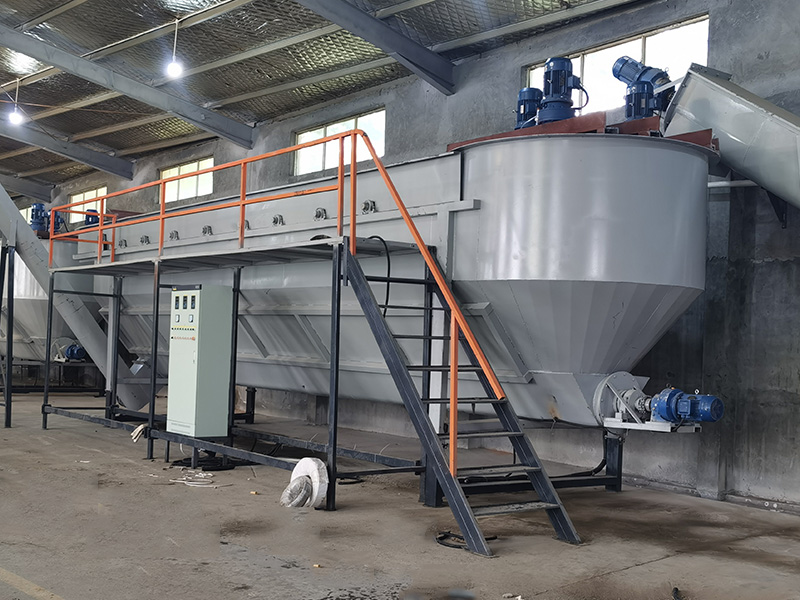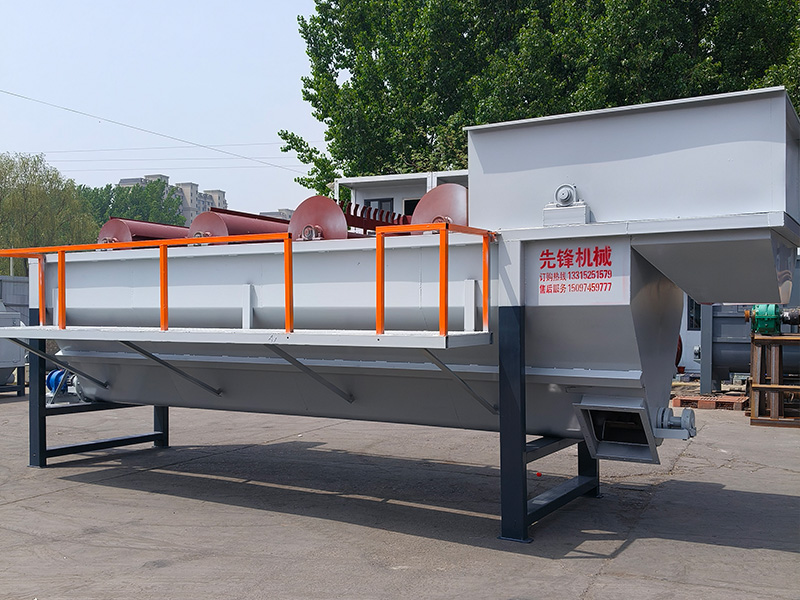Transforming Waste: The Vital Role of Delabeling Machines in Effective Recycling
Transforming Waste: The Vital Role of Delabeling Machines in Effective Recycling
Table of Contents
Introduction to Delabeling Machines and Their Importance in Recycling
What Are Delabeling Machines?
The Science Behind Delabeling: How Delabeling Machines Work
Benefits of Delabeling Machines in the Recycling Process
Applications of Delabeling Machines in Various Industries
C
May 28,2025

Transforming Waste: The Vital Role of Delabeling Machines in Effective Recycling
Table of Contents
- Introduction to Delabeling Machines and Their Importance in Recycling
- What Are Delabeling Machines?
- The Science Behind Delabeling: How Delabeling Machines Work
- Benefits of Delabeling Machines in the Recycling Process
- Applications of Delabeling Machines in Various Industries
- Choosing the Right Delabeling Machine for Your Recycling Needs
- Future Trends in Delabeling Technology and Recycling
- Frequently Asked Questions About Delabeling Machines
- Conclusion: The Future of Recycling with Delabeling Machines
Introduction to Delabeling Machines and Their Importance in Recycling
In the modern era, where sustainability is at the forefront of environmental discussions, the role of recycling has never been more crucial. Delabeling machines serve as an essential component in this recycling landscape, particularly in the processing of plastic waste. By efficiently removing labels and adhesives from containers, these machines facilitate the recycling process, ensuring that materials are clean and ready for reprocessing. As we delve deeper into the mechanics and benefits of delabeling machines, we will uncover their significant impact on enhancing recycling efficiency and contributing to a sustainable future.
What Are Delabeling Machines?
Delabeling machines are specialized equipment designed to remove labels, stickers, and other adhesives from various containers, such as bottles and jars. They are employed in recycling facilities to prepare materials for the recycling process. The removal of labels is critical because contaminants can hinder the recycling process, leading to lower-quality recyclables and decreased efficiency. By utilizing delabeling machines, recycling facilities can improve material purity and increase the overall value of recycled products.
Types of Delabeling Machines
There are several types of delabeling machines, each suited for specific applications. Common types include:
- **Wet Delabeling Machines**: These machines use water and detergents to loosen and remove labels from containers. They are particularly effective for sticky adhesives.
- **Dry Delabeling Machines**: These machines use mechanical methods to remove labels without the use of water. They are often faster and require less maintenance.
- **Combination Delabeling Machines**: These versatile machines can utilize both wet and dry methods, depending on the type of labels being processed.
The Science Behind Delabeling: How Delabeling Machines Work
The effectiveness of delabeling machines lies in their advanced technology and design. The process typically involves several key steps:
1. Collection of Containers
Recyclable containers are collected and sorted at recycling facilities. Delabeling machines can handle a variety of container shapes and sizes, ensuring a broad applicability in waste processing.
2. Pre-Processing
Before delabeling, containers may undergo pre-processing, such as washing to remove surface contaminants. This step enhances the efficiency of label removal.
3. Label Removal
Delabeling machines employ different methods (wet or dry) to remove labels. For wet methods, containers are submerged or sprayed with a solution that loosens the adhesive. In dry methods, mechanical brushes or scrapers are utilized to physically detach the labels.
4. Separation of Labels
Once removed, labels are typically collected and separated from the containers for proper disposal or recycling. This ensures that the materials entering the recycling stream are as pure as possible.
5. Final Processing
Clean containers are then sent for further processing, such as shredding and granulation, to be turned into new products.
Benefits of Delabeling Machines in the Recycling Process
The incorporation of delabeling machines into recycling operations offers numerous benefits:
Enhanced Material Purity
By effectively removing labels and adhesives, delabeling machines reduce contamination in the recycling stream, leading to higher-quality recycled materials.
Increased Efficiency
Delabeling machines streamline the recycling process by automating the label removal step, saving time and labor costs. This efficiency allows recycling facilities to handle larger volumes of materials.
Improved Sustainability
With a higher output of clean recyclables, the use of delabeling machines contributes to a circular economy, where materials are continuously reused rather than discarded.
Cost-Effectiveness
Investing in delabeling technology can result in significant cost savings over time. By increasing the quality and quantity of recyclables, facilities can enhance their profitability.
Applications of Delabeling Machines in Various Industries
Delabeling machines find applications across multiple sectors, including:
1. Beverage Industry
In the beverage industry, delabeling machines are essential for processing used plastic bottles. They ensure that labels are removed before recycling, contributing to a higher quality of recycled PET.
2. Food Packaging
For food packaging, delabeling machines help remove labels from glass jars and plastic containers, ensuring that food residues do not contaminate the recycling process.
3. Pharmaceutical Industry
Pharmaceutical companies utilize delabeling machines to process discarded medication containers, ensuring safe and compliant recycling of plastic materials.
4. Household Waste Management
Municipal waste management systems often implement delabeling machines to enhance the recycling of everyday household products, promoting community sustainability initiatives.
Choosing the Right Delabeling Machine for Your Recycling Needs
Selecting the ideal delabeling machine requires consideration of various factors:
1. Material Types
Different machines are designed for specific types of materials. Understanding the primary materials you will process can guide your choice.
2. Throughput Capacity
Evaluate the volume of containers you plan to recycle. A machine with a higher throughput capacity may be necessary for larger operations.
3. Maintenance Requirements
Consider the maintenance needs of the machine. Some machines may require frequent servicing, which can impact operational downtime.
4. Budget
Establish a budget for your delabeling machinery investment. Weigh the initial costs against potential long-term savings and benefits.
Future Trends in Delabeling Technology and Recycling
As the recycling industry evolves, so do delabeling technologies. Future trends may include:
1. Automation and AI Integration
The integration of artificial intelligence into delabeling machines may enhance their efficiency, allowing for smarter sorting and processing of recyclables.
2. Enhanced Eco-Friendly Solutions
Developments in eco-friendly cleaning solutions for wet delabeling machines may further reduce environmental impacts.
3. Increased Customization
As recycling needs vary by region and industry, manufacturers are likely to offer more customizable delabeling solutions tailored to specific requirements.
Frequently Asked Questions About Delabeling Machines
1. What materials can delabeling machines process?
Delabeling machines can typically process various materials, including plastics, glass, and metal containers. The effectiveness varies based on the machine type and design.
2. How do I maintain a delabeling machine?
Regular maintenance includes cleaning, lubrication, and inspections to ensure optimal performance. Follow the manufacturer's guidelines for specific maintenance routines.
3. Are delabeling machines environmentally friendly?
Yes, by improving the recycling process's efficiency and purity, delabeling machines contribute to more sustainable waste management practices.
4. Can delabeling machines handle different label types?
Most delabeling machines are designed to handle a variety of label types, including paper, plastic, and adhesive labels. However, specific machine capabilities may vary.
5. What is the average cost of a delabeling machine?
The cost of delabeling machines can vary widely based on capacity, technology, and manufacturer. It's essential to assess your needs and budget when considering a purchase.
Conclusion: The Future of Recycling with Delabeling Machines
Delabeling machines play a pivotal role in enhancing the recycling process by ensuring that materials are clean and free from contaminants. As the demand for sustainable practices grows, the importance of these machines within the recycling industry cannot be overstated. By embracing the advantages of delabeling technology, businesses can not only improve operational efficiency but also contribute significantly to a more sustainable future. Investing in delabeling solutions is not just a choice; it's a commitment to a cleaner planet and a circular economy.
TAG:
NEXT:
Contact Us
E-mail :
Phone/WhatsApp:
Address:
Shunping, Baoding City, Hebei Province









